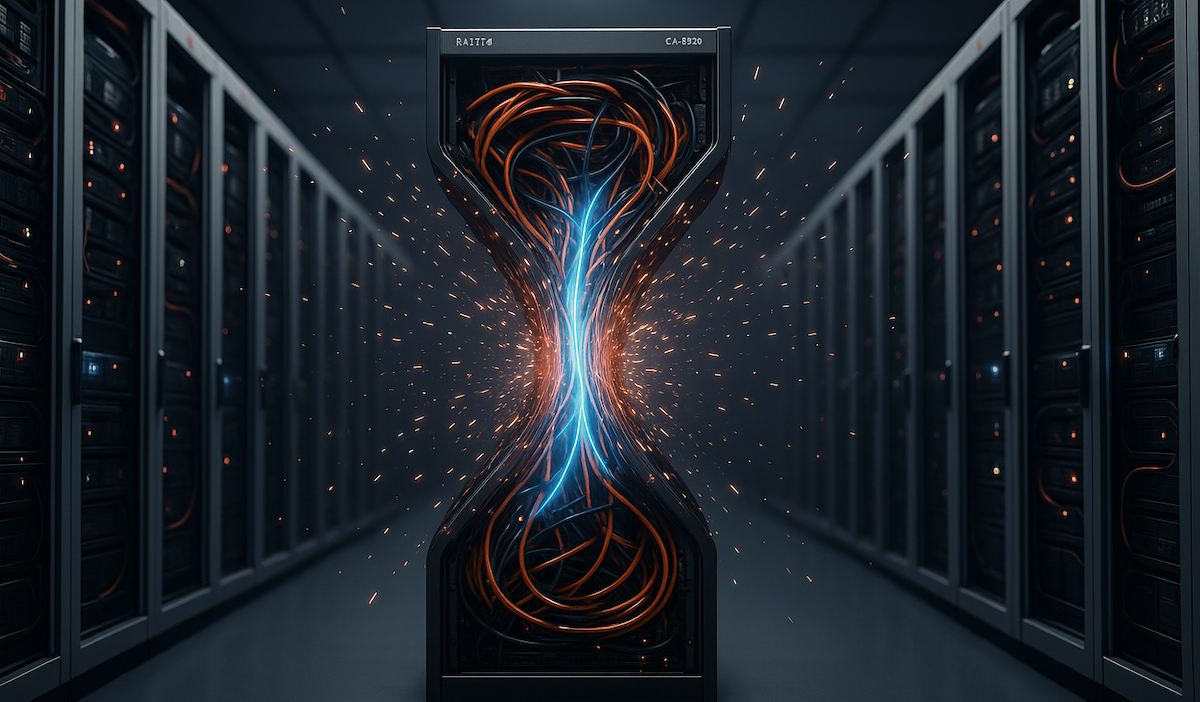AI
Unlocking the Full Potential of AI: Embracing an SSD-First Future

The Evolution of Storage Solutions in the AI Era
Article by Solidigm
With the rapid adoption of AI technology, data centers are facing a critical bottleneck in storage management. Traditional Hard Disk Drives (HDDs) have been at the forefront of this issue as data that was once stored as cold archives is now being utilized for building accurate models and delivering improved inference results. The transition from cold data to warm data necessitates storage solutions with low latency, high throughput, and the ability to handle parallel computations. While HDDs continue to serve as the go-to option for cost-effective cold storage, their role needs to be reevaluated to prevent the high-capacity storage layer from becoming the weak link in the AI ecosystem.
Jeff Janukowicz, research vice president at IDC, highlights the challenges faced by HDDs in modern AI workloads within data centers. While HDD suppliers are offering larger drives to accommodate data storage growth, this often results in slower performance. As a response to this issue, the concept of ‘nearline SSDs’ is gaining traction in the industry.
Today, AI operators are striving to optimize GPU utilization, manage network-attached storage efficiently, and scale compute operations while reducing costs in power and space usage. Roger Corell, senior director of AI and leadership marketing at Solidigm, emphasizes that success in this environment requires more than just a technical upgrade – it demands a fundamental realignment of storage strategies.
Corell points out the shifting value of data in the realm of AI, leading to the emergence of high-capacity Solid State Drives (SSDs). These SSDs not only displace HDDs but also alleviate one of the major bottlenecks in AI operations. By enhancing performance, efficiency, and density, SSDs enable organizations to free up power and space for further GPU scalability. This transition represents not just a storage upgrade but a structural shift in designing data infrastructure for the AI era.
Comparing HDDs and SSDs: Beyond Hardware Refresh
While HDDs boast impressive mechanical designs, their reliance on moving parts results in higher energy consumption, larger physical footprint, and increased failure rates compared to solid-state drives. The mechanical nature of HDDs limits Input/Output Operations Per Second (IOPS), creating bottlenecks for AI workloads that demand low latency and high concurrency.
SSDs, on the other hand, offer reduced energy consumption and improved efficiency. Solidigm’s SSD-based VAST storage solution, for example, has shown a significant decrease in energy usage, providing a substantial advantage in AI environments where power efficiency is crucial. A study conducted by Solidigm and VAST Data demonstrated that SSDs consume 77% less storage energy compared to HDDs in an exabyte-scale storage scenario.
Optimizing Data Center Footprints
Corell highlights the efficiency of Solidigm’s 122TB SSDs in comparison to hybrid HDD + TLC SSD configurations, showcasing a nine-to-one savings in data center footprint. This reduction not only saves space and power but also enables organizations to enhance infrastructure scalability, expand GPU operations, or build smaller footprints.
The physical footprint of data stored on HDDs results in a larger construction materials footprint, contributing to greenhouse gas emissions. By transitioning to high-capacity SSDs, organizations can reduce embodied emissions significantly and minimize the environmental impact of storage solutions.
Revolutionizing Cold and Archival Storage Strategies
The shift to SSDs signifies more than just a storage upgrade; it marks a fundamental realignment of data infrastructure strategies in the AI era. Corell notes that while all-flash solutions are becoming more prevalent, there is still a place for HDDs in use cases such as archival and cold storage. However, as the value of warm and warming data segments grows, the adoption of SSDs is expected to increase.
Addressing Future Power Challenges
Solidigm’s QLC technology has been instrumental in balancing higher drive capacities with cost efficiency. The company’s E1.S eSSD, designed for dense and efficient storage in direct attach configurations, features single-sided direct-to-chip liquid cooling technology in collaboration with NVIDIA. This innovation aims to manage heat effectively, improve performance, and enhance cost efficiency for demanding AI workloads.
As AI workloads become more complex, storage architecture plays a crucial role in meeting escalating demands. High-capacity SSDs, coupled with liquid cooling and efficient design, offer a viable solution to address AI’s evolving requirements. Organizations that realign their storage infrastructure now will be better positioned to scale AI operations effectively in the future.
This article is sponsored by Solidigm. For inquiries, contact sales@venturebeat.com.
-

 Video Games2 days ago
Video Games2 days agoTekken 8: Rise of the Shadows
-

 Video Games1 day ago
Video Games1 day agoGoku Takes on the Dragon Ball FighterZ Arena
-

 Amazon2 days ago
Amazon2 days agoNeil Young Takes a Stand: Pulling Music from Amazon in Protest of Jeff Bezos’ Support for Trump
-

 Tech News2 days ago
Tech News2 days agoSamsung Galaxy UI 8: Embracing the Big Free AI Upgrade
-

 Security2 days ago
Security2 days agoCritical Vulnerability Exposed: Oracle EBS Targeted in Recent Cyber Attacks by Cl0p Hackers
-

 Apple2 days ago
Apple2 days agoExploring the Dystopian Realms of Pluribus: An Apple Original Series Trailer
-

 Microsoft2 days ago
Microsoft2 days agoEnhanced Copilot Features: Creating Office Documents and Gmail Integration
-

 AI1 day ago
AI1 day agoOracle’s Next-Gen Enterprise AI Services Powered by NVIDIA’s Cutting-Edge GPUs
































